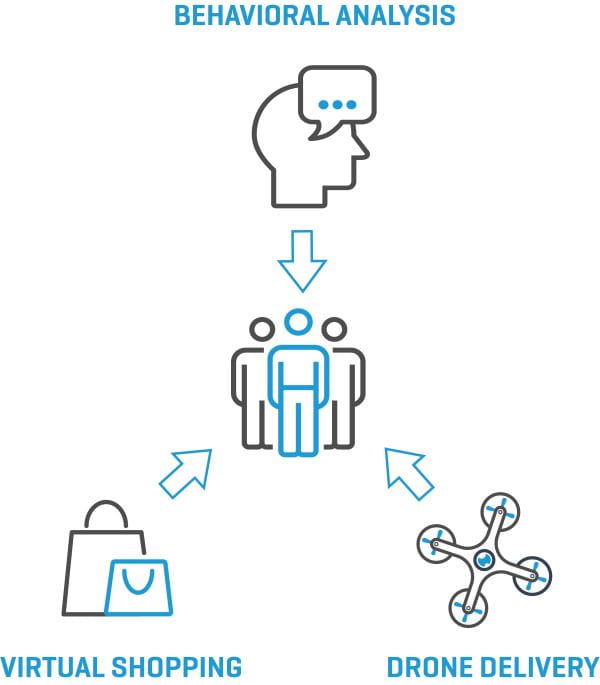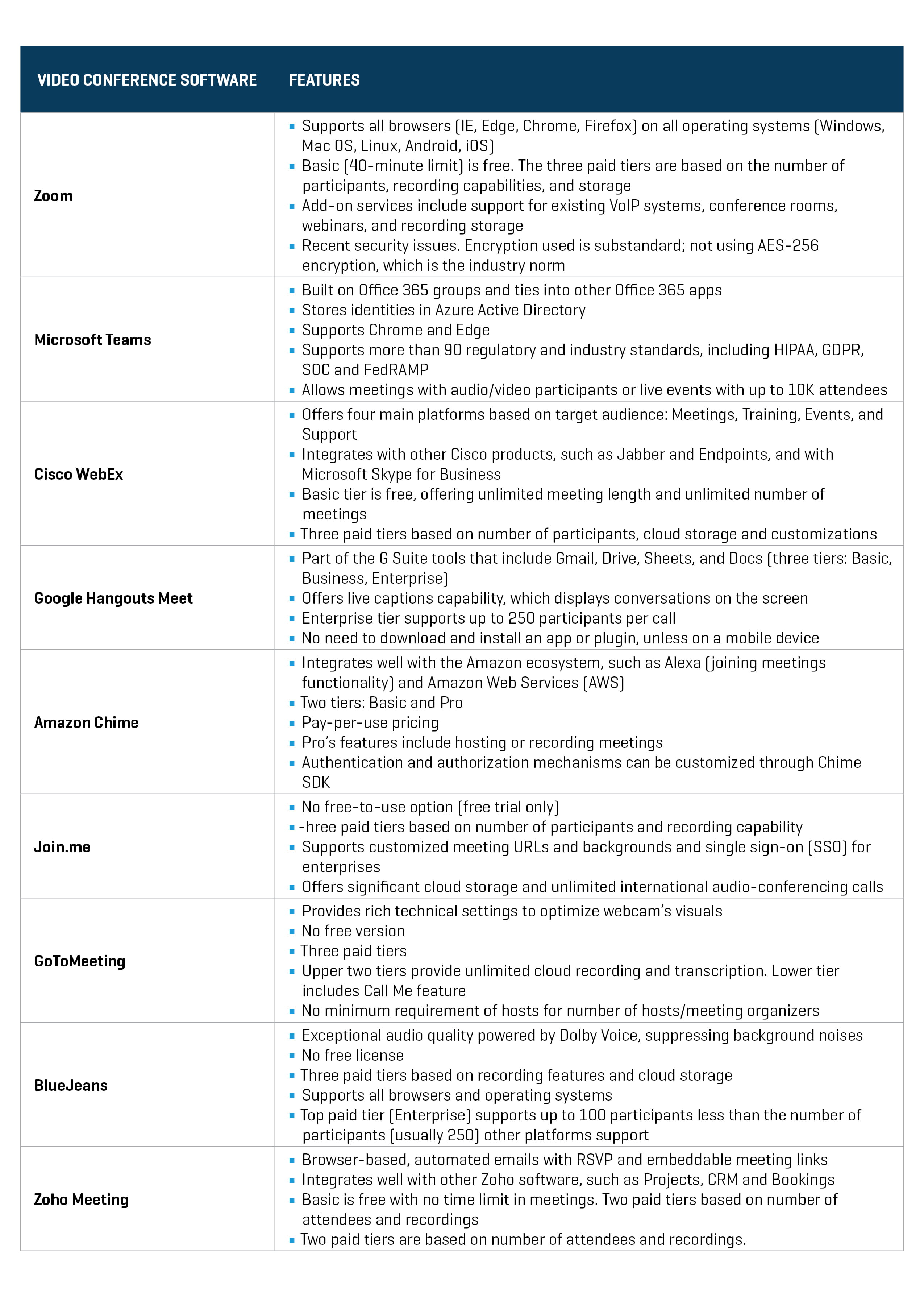Digital Trends for the CIO Amid the COVID-19 Pandemic
Digital Trends for the CIO Amid the COVID-19 Pandemic
Remote workforce, remote customers, supply-chain disruptions, and insufficient support. We analyze these pain points associated with COVID-19 and the corresponding digital solutions.
During these difficult times, both small and large businesses need to find innovative ways to ensure employee productivity and engage their customers. Having workers and consumers stuck at home has created an unusual business environment where digital transformation is more important than ever. The timely and careful implementation of digital solutions will decide which companies will retain their employees, maintain their products and operations, and keep their brands intact.
Today’s chief information officers (CIOs) should anticipate challenges and bring in the right digital tools or optimize existing ones to mitigate all potential issues. Current pain points include a remote workforce, remote customers, supply-chain disruptions, and insufficient employees to support elevated needs in certain areas of the business, such as call centers. We analyze these pain points and the corresponding digital solutions.
Remote Workforce

- Video-conferencing tools: A video-enabled environment enhances both employee collaboration and meetings with clients or vendors. Several software solutions provide video-enabled meetings and collaboration features, such as chat and screen-sharing. The table below shows the most popular software packages and some of their features.
- Daily work tools: Access to enterprise resource planning (ERP), customer relationship management (CRM), financial, human resources (HR), and other important software systems is now remote. CIOs should consider migrating certain software tools and components to the cloud if they have not done so already. Leveraging software-as-a-service (SaaS)-based software makes it easier to track projects, dashboards, invoices, analytics, productivity, and online training for specific modules. For on-premises systems, VPN connections and virtual desktop clients must be used, and continuous monitoring of the systems is necessary. On-premises servers may not have been built with scalability in mind, where many employees would be using them remotely at the same time. This is why CIOs need to transition the services that need scalability and ongoing customization to the cloud, ensuring that they meet all necessary SLAs, security, and backup requirements.
- Network latency: The corporate VPN will now have to support all employees simultaneously. The IT team should conduct network measurements to understand bandwidth limitations, if any. Extra bandwidth may need to be purchased temporarily in order to support all users. Additionally, AI-based algorithms can allocate available bandwidth to certain regions or employee groups during certain times per day according to predicted network bandwidth needs based on past data and tasks.
- Security: This is one of the most important areas that the CIO and the chief information security officer (CISO) need to focus on. All communications and data among employees need to be encrypted using the most advanced algorithms. Third-party software (such as video conferencing, VPN, and DNS servers) must be carefully tested with cybersecurity tools to assess potential security breaches. Wireless internet protocols (e.g., Wi-Fi) and configurations of remote employees have to be certified by the IT team, since critical corporate data can be stolen when sent from the Wi-Fi router to the employee’s corporate laptop. Security policies must be enforced more than ever. Consider the following, for example:
- Use of multi-factor authentication (MFA), where login to sensitive corporate systems is based not only on corporate passwords but also on a second method, e.g., PIN/password sent to corporate mobile device or use of biometrics
- Personal firewall deployment in operating system of corporate laptops
- Full-disk encryption
- Use of network authentication and security protocols, such as Secure Sockets Layer (SSL), Secure Shell (SSH), or Kerberos
- Detailed vulnerability assessment and understanding of security protocols used by all third-party corporate software
Supply Chain/Operations

The pandemic has affected the supply chains of many industries, including healthcare and the food and beverage sector. Consumer demand is wildly fluctuating almost daily, and advanced and accurate prediction models have to be implemented. Traditional inventory-demand forecasting and supply-chain planning are not sufficient to understand consumer-demand patterns and adjust the supply needs. Advanced machine learning methods must enhance the supply chain management software packages that companies are using. Sourcing has become a challenge, so CIOs and chief operating officers (COOs) should leverage global business-to-business (B2B) marketplaces, such as SAP Ariba Discovery, which SAP has made accessible for free during the pandemic.
Customer Engagement

Consumers are no longer able to visit brick-and-mortar stores, so CIOs need to focus on digital channels and ensure ease-of-use for their customers. More specifically:
- Predictive analytics coupled with more advanced machine learning techniques need to be used on the company’s website and mobile applications to leave no piece of data unused to understand the behavior of all online visitors. The result will be a customized digital platform where products and online promotions match customers’ preferences.
- Although virtual reality has not been as successful as expected so far, current conditions favor company investments in virtual shopping experiences. The physical store can be simulated in the virtual world, and clients can enjoy the experience of shopping.
- Drones can be used for delivery to protect human workers from the coronavirus and ensure fast service for customers.
Automation
Automation can help in certain areas where more employees than normal are now needed. IT departments can apply automation and software bots to accomplish the following:
- Manage increased number of customer complaints due to new challenges
- Streamline the processing of a large number of claims, especially in the insurance industry
- Help in the selection and hiring of the many applicants needed in warehouses, for deliveries, and in grocery stores
- Assist in handling high call center volume and resolve customer issues without involving live representatives
- Automate critical financial processes and revenue cycle management, especially in the healthcare industry
Importance of Digital Transformation
During these difficult times, digital technology can help us transform industries faster than ever before. CIOs need to assess the areas where digital transformation is needed, define the strategy, and design the execution plan as soon as possible. Companies have to be proactive and leverage this time to remain resilient and flexible.
Amid this crisis, Stout’s digital practice is committed to helping and enabling CIOs along their digital transformation journeys.







